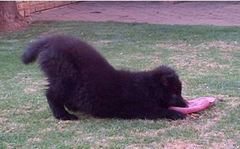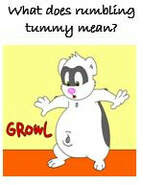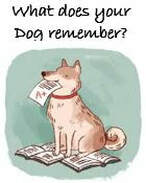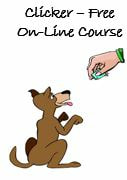Trick Training for Fun
by Carla Strydom
Teaching your dog tricks is without a doubt one of the most fun things to do. Trick training stimulates the mind, creates an outlet for energy, builds confidence, develops physical abilities and is a great way to interact and forge a bond with your puppy or dog of any age.
Most people are under the impression that trick training is for circus dogs, parrots and people with too much time on their hands. But in actual fact it is a great way of spending quality time with your pooch. The truth is spending time with your dog paves the way to a close, healthy, strong bond between the two of you.
Trick training opens a clear line of communication between you and your dog. It does more than teach cute party tricks to entertain your friends. It offers an opportunity to better understand how your dog thinks and have him better understand your cues. The trust, respect and cooperative spirit developed through this process will last a lifetime.
It is a fun and rewarding past time for both you and your dog. Through training you gain trust and mutual respect. Trick training is great for mental stimulation and really tires out your pooch. Although physical exercise is of the utmost importance and should never be replaced by anything else, trick training offers a great way to switch up your routine. Combine a trick training and obedience session to really keep your dogs’ interest.
Puppy classes, basic obedience classes, trick training; it all creates a solid foundation for your dog to learn additional skills. Once you create an appetite for learning, it’s easy to teach new things. Even for an older dog. Although trick training is not as serious as obedience training, it offers many of the same benefits.
Trick training is also a great confidence builder. And for timid, shy dogs this is an ideal way to get them to crawl out of their shell as it boosts confidence when they get it right. Always start with something easy and work your up to more difficult tricks. If your dog does not understand what it is that you want, revert to something easy that he does know and praise profusely, then try again. Teaching your dog tricks is also a great way of diverting attention from something negative. If say for instance some dogs got a little boisterous at the park and your dog does not like other dogs excitedly barking or growling, call him to you and divert his attention with a set of tricks. Then release him again once the other dogs have calmed down and your pup is in a positive state of mind.
,
.

The Lure and Reward method as well as clicker training works great when teaching new tricks. The Clicker marks the exact behaviour that you want and is a consistent cue that your puppy is doing something right. Always have a bag of treats handy as every time you click, you will have to treat. Treating is a great motivator. Imagine you have to go to work every day, but you never get a salary. Not a nice prospect to look forward to.
But if you get a salary, it motivates you to work harder, boosts your confidence and enables you to buy things you want like a car, furniture and so forth. Training works on the same principle. Each time you train, use different treats like chicken, viennas or steak. Once your dog can do a trick on command start using a lower value treat like kibble for an average crawl, beg or roll-over and a high-value treat like meat for excellent behaviours. Ever so often offer a toy as a reward and play a game of tug. Your voice is also a great motivator and a pat on the chest and a “good boy!” goes a long way.
Remember that patience is very important. Your dog is going to try and figure out what it is that you want him to do. Never punish your pup for not doing it right. Rather choose a word like “oops!” instead of NO! And then try again. Commands for tricks must preferably be one word like roll, curtsy or paw and consistency is key. Decide on a command before hand and stick to it! Changing commands can be very confusing!
Keep training sessions short and fun. Repetition is also very important. Dogs learn through repetition, consistency and reinforcement. Some dogs will get it within the first try. Others take a little longer. Always use motivational techniques to reinforce the behaviour. If you get frustrated, stop training! It should always be fun for the both of you! Offer clear guidance, be consistent, motivate and have excellent timing and your pooch will be doing a roll-over in no time! And the best part is any dog can learn tricks!
When teaching a new trick, often times it may seem like your dog is not getting it. He may scratch your hand, squirm for the treat, offer behaviours he already knows. Always remember, in your mind you have a clear picture of what it is that you want, he doesn’t. When he finally gets it and starts to get comfortable in doing it, start to raise the bar until you eventually have a trick that is performed with great skill.
Remember to always end on a high note. Practising tricks can be mentally tiring for your dog. Keep it fun and stop before he gets too tired.
But if you get a salary, it motivates you to work harder, boosts your confidence and enables you to buy things you want like a car, furniture and so forth. Training works on the same principle. Each time you train, use different treats like chicken, viennas or steak. Once your dog can do a trick on command start using a lower value treat like kibble for an average crawl, beg or roll-over and a high-value treat like meat for excellent behaviours. Ever so often offer a toy as a reward and play a game of tug. Your voice is also a great motivator and a pat on the chest and a “good boy!” goes a long way.
Remember that patience is very important. Your dog is going to try and figure out what it is that you want him to do. Never punish your pup for not doing it right. Rather choose a word like “oops!” instead of NO! And then try again. Commands for tricks must preferably be one word like roll, curtsy or paw and consistency is key. Decide on a command before hand and stick to it! Changing commands can be very confusing!
Keep training sessions short and fun. Repetition is also very important. Dogs learn through repetition, consistency and reinforcement. Some dogs will get it within the first try. Others take a little longer. Always use motivational techniques to reinforce the behaviour. If you get frustrated, stop training! It should always be fun for the both of you! Offer clear guidance, be consistent, motivate and have excellent timing and your pooch will be doing a roll-over in no time! And the best part is any dog can learn tricks!
When teaching a new trick, often times it may seem like your dog is not getting it. He may scratch your hand, squirm for the treat, offer behaviours he already knows. Always remember, in your mind you have a clear picture of what it is that you want, he doesn’t. When he finally gets it and starts to get comfortable in doing it, start to raise the bar until you eventually have a trick that is performed with great skill.
Remember to always end on a high note. Practising tricks can be mentally tiring for your dog. Keep it fun and stop before he gets too tired.
Here are some tricks you can teach your dog:
Take a bow.
(Your dog bows by going down with his front feet until his elbows touch the floor and by keeping his hind legs upright.)
Step 1: Have your dog stand in front of you with his shoulder blade in line with your knees. Hold a treat at nose height.
Step 2: Gently press your hand into your dog’s nose and downward.
Step 3: As soon as his elbows touch the floor, click with your clicker and release the treat. Back your hand away immediately so that your dog does not lie down. You can do it without the clicker. Just release the treat when your dog offers the correct behaviour.
Crawl.
(Your dog crawls forward, sliding his belly on the floor).
Step 1: Start with your dog in the down position facing you. Kneel down in front of him with some treats in your hand.
Step 2: Let him smell the treats in your hand and slowly move your hand away from him. He should take a step toward your hand and this is what you will click and reward for. Don’t be tempted to ask for too much.
Reward one or two steps at first and then build up to a crawl of a meter or so. If your dog stands up, you are luring him too quickly.
(Your dog bows by going down with his front feet until his elbows touch the floor and by keeping his hind legs upright.)
Step 1: Have your dog stand in front of you with his shoulder blade in line with your knees. Hold a treat at nose height.
Step 2: Gently press your hand into your dog’s nose and downward.
Step 3: As soon as his elbows touch the floor, click with your clicker and release the treat. Back your hand away immediately so that your dog does not lie down. You can do it without the clicker. Just release the treat when your dog offers the correct behaviour.
Crawl.
(Your dog crawls forward, sliding his belly on the floor).
Step 1: Start with your dog in the down position facing you. Kneel down in front of him with some treats in your hand.
Step 2: Let him smell the treats in your hand and slowly move your hand away from him. He should take a step toward your hand and this is what you will click and reward for. Don’t be tempted to ask for too much.
Reward one or two steps at first and then build up to a crawl of a meter or so. If your dog stands up, you are luring him too quickly.
Fetch my slippers
(Upon your command, your dog will search for and bring one of your slippers. Once he’s brought the one, he will then go to find the other one and bring it to you).
Step 1: In an empty environment, play a bit of tug with the slipper and then throw your slipper a short distance and encourage your dog to get it. Your command to your dog will be “fetch slipper”. Reward when your dog brings the slipper to you.
Step 2: After your dog successfully fetches the slipper, place it on the couch or bed but do it so that he is able to see it. You can also place it in another room. Tell your dog to “fetch slipper”.
Step 3: Once your dog can go out and find your slipper, you can give the command at any time you would like your slippers. You can also teach your dog to fetch other items.
Remember that each dog is an individual and every dog learns at his or her own pace. Keep training fun and set your dog up for success. Happy training!
(Upon your command, your dog will search for and bring one of your slippers. Once he’s brought the one, he will then go to find the other one and bring it to you).
Step 1: In an empty environment, play a bit of tug with the slipper and then throw your slipper a short distance and encourage your dog to get it. Your command to your dog will be “fetch slipper”. Reward when your dog brings the slipper to you.
Step 2: After your dog successfully fetches the slipper, place it on the couch or bed but do it so that he is able to see it. You can also place it in another room. Tell your dog to “fetch slipper”.
Step 3: Once your dog can go out and find your slipper, you can give the command at any time you would like your slippers. You can also teach your dog to fetch other items.
Remember that each dog is an individual and every dog learns at his or her own pace. Keep training fun and set your dog up for success. Happy training!
|
Ever heard a loud gurgling noise and wondered, “Why is my dog’s stomach making noises?” You’re not alone. And, more important, you might have wondered whether these “gurgling sounds in the tummy” were something to be worried about.
|
At last, scientists may have an answer to a question every dog owner asks: Does your pet remember the things you do together?
|
Clicker is an amazing and easy way to stimulate your dog mentally, plus have a lot of fun and allow you to show off to friends and family!
|






